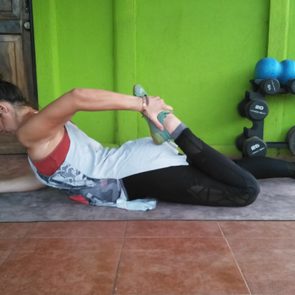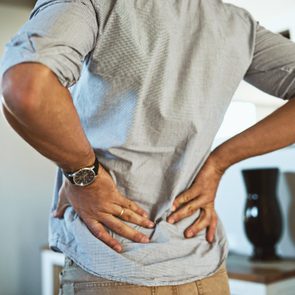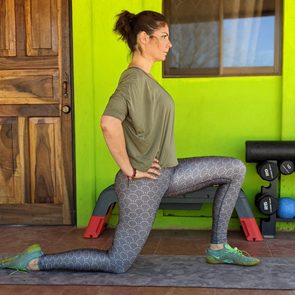6 Leg Exercises You Can Do at Home
Updated: Jun. 10, 2021
These leg exercises can boost your muscle strength, stamina, and allow you to breeze through difficult chores and long walks.
How to get stronger legs
Strong legs are healthy legs that can carry you easily through daily life. It should come as no surprise that your entire lower body, stretching from your feet to your glutes, plays an integral role in supporting activities of daily living.
Whether you’re standing up from a chair or hitting the trails for a five-mile run, the large (and small) muscles of your legs create the movement to power you up, down, and side-to-side.
This is why it’s so important to protect against the muscle-wasting that can make daily activities more difficult (not to mention conditioning for athletic endeavors downright painful). If you don’t already include lower body exercises in your regular routine, it’s time to get started.
The benefits of strong legs
You don’t have to sculpt the giant legs of a bodybuilder to reap the benefits of strength training your lower body. In fact, just two weekly sessions of lower body exercises can pay off when it comes to increasing muscle strength, stamina, and appearance.
And beyond the fact that building strong legs can help improve body composition and give you an overall leaner appearance, there are lots of other great reasons to strength train your legs.
You move better
When you maintain strength through your lower body, everything you do is a little easier. You tire less quickly when doing normal activities like walking your dog, carting in a load of groceries, or climbing up a flight of stairs. And if you get less worn out from regular activity, that’ll leave you with more energy to pursue hobbies you really enjoy.
“Strong legs provide a base of support for the body,” points out Kaseedee Jermain, New Jersey certified trainer and weight loss and fitness nutrition specialist with the National Academy of Sports Medicine (NASM). “Hips, knees, and ankles take the brunt of everyday movements. If we don’t strengthen the muscles around those joints, we’re setting ourselves up for injury as we age.” And that’s a pretty important benefit.
(These are the everyday moves that hurt the body.)
Athletic activities become easier
Think about the athletes you watch on TV—whether they’re gymnasts, football players, Crossfit competitors, or sprinters, they all have impressive lower-body musculature. By training the lower body on a regular basis, athletic performance improves. You develop the ability to run faster, jump higher, juke your opponent, and simply lift more weight.
Of course, many of these skills are further developed through specialized training, but they still require a baseline level of strength to continue to improve.
You feel better about your physical appearance
“One major benefit of leg exercises is the way they’ll change the appearance of your legs,” says Tracy McGarry, a certified personal trainer and nutrition coach who offers training online.
“When you strengthen your legs through resistance training, you’re building muscle which is what creates a defined, toned look. Leg exercises will create definition a lot faster than cardiovascular exercise like jogging or walking,” she says.
And starting to see that definition can change the way you feel about your body. You may discover you feel better about putting on a bathing suit or a pair of shorts. In this way, strength training can help bolster confidence and self-esteem.
You’re less likely to experience falls
Individuals who regularly train their leg muscles to work in coordination, ultimately maintaining mobility in the joints of their lower body, are less likely to experience balance-related falls. Just think about it—if your legs are strong, and you’re regularly moving them through a full range of motion, they’re more prepared to react and respond to balance challenges.
If someone bumps you off balance, you’ll be prepared to quickly move your leg in response, your muscles firing and “catching” you. And considering that falls, especially in older populations, can significantly impact the quality of life, engaging in activities that help reduce the risk (like doing leg exercises) will pay off in the long run.
Leg exercises you can do at home
The best part is you don’t even have to have a gym membership or expensive equipment to build stronger legs. Try these simple exercises at home—they require nothing more than dumbbells. And if you don’t have dumbbells? No worries. You can skip the weights entirely and use nothing more than your body weight.
(Don’t miss these leg stretches you can do before and after your workout.)
Goblet squat
The goblet squat is an excellent option for introducing resistance to an air squat while encouraging proper form. This is because holding the weight in front of your chest helps encourage an upright torso position as you squat, reducing the likelihood that you’ll tip forward at the hips as you squat.
Plus, by aiming your elbows straight down between your legs as you squat, the exercise helps encourage proper knee alignment with your toes, reducing the likelihood that your knees will “collapse inward” as you squat.
As with all squat variations, the goblet squat targets all the major muscle groups of the lower body, including the glutes, quads, hamstrings, and calves, while also hitting the core. It also encourages lower-body coordination and mimics movements you perform in everyday life, like standing up from a chair, or squatting down to pick up a box from the ground.
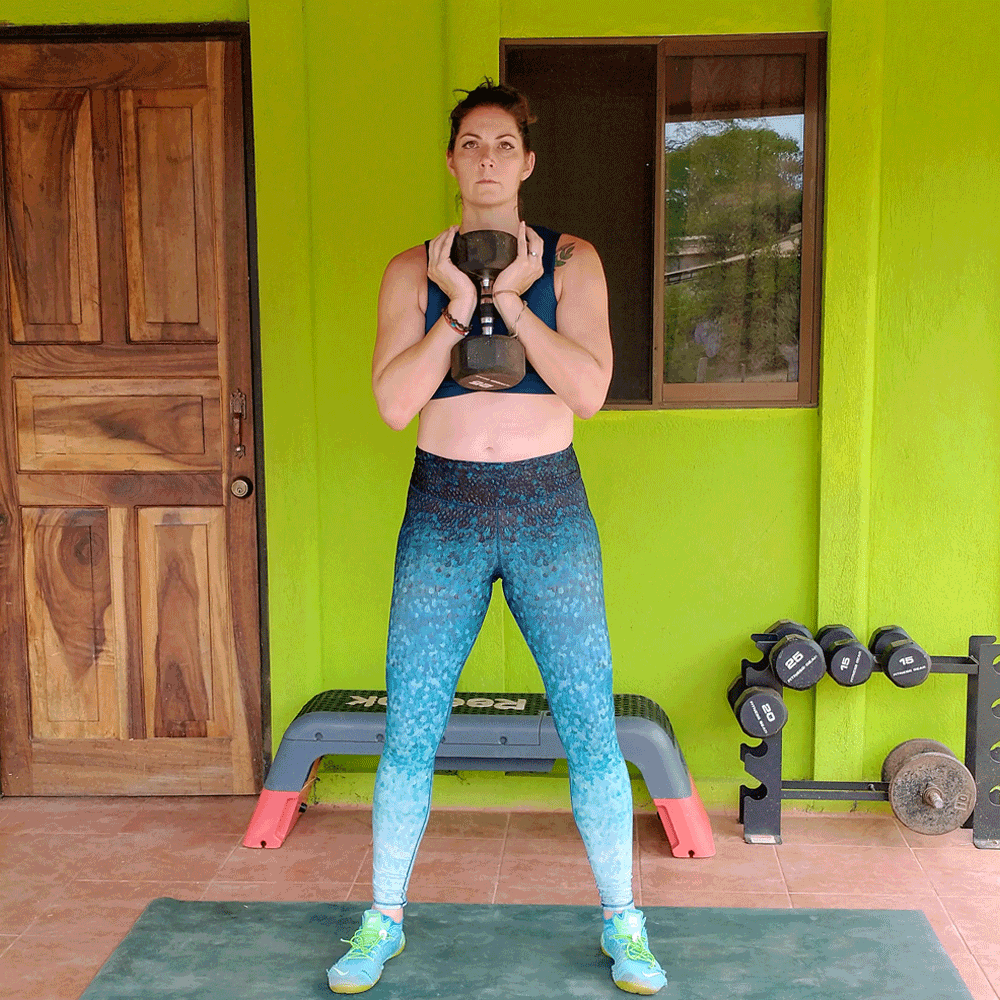
How to do it
Stand with your feet between hip and shoulder-distance apart, your toes angled slightly outward. Hold a dumbbell between your hands vertically in front of your chest, “cupping” the head of the dumbbell as though you were holding a goblet. Engage your core, roll your shoulders back, and begin squatting down by pressing your hips backward, lowering them toward the floor.
Bend your knees, making sure they’re tracking in alignment with your toes. Keep your torso upright and your shoulders back as you continue squatting as low as you comfortably can. Your elbows should end up between your knees. When you’ve gone as deep as your range of motion allows, press through your heels and reverse the movement, returning to standing.
Perform three sets of 12 to 15 repetitions.
Single-leg deadlift
Deadlift variations are an excellent way to strengthen your hamstrings, glutes, and even your low back and core. When you perform a single-leg deadlift, you’re enhancing side-to-side hamstring and glute strength, while also working on balance and coordination.
That said, the balance challenge is real! If you struggle to maintain your balance, ditch the weight and try it dumbbell-free. If you’re still having a hard time, keep your back toe on the ground like a kickstand as you perform the exercise.
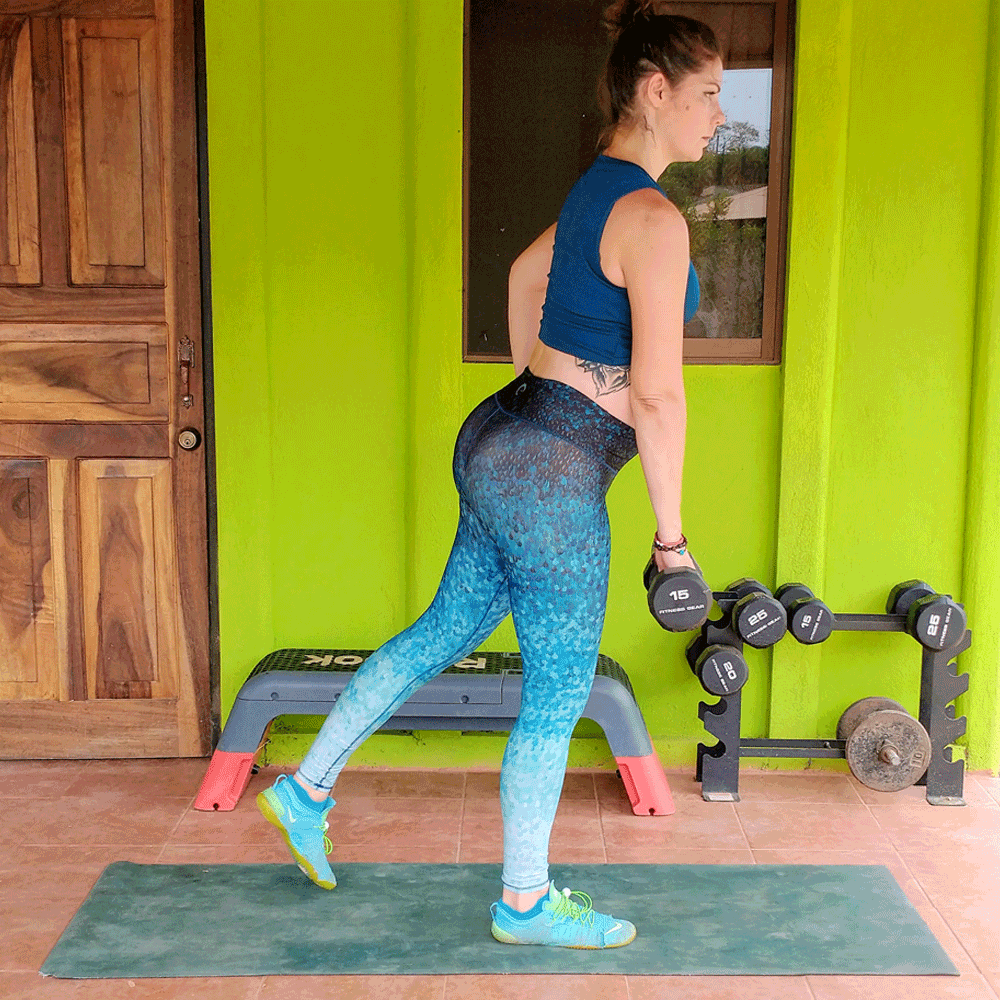
How to do it
Stand tall with your feet hip-distance apart, a dumbbell in your right hand in front of your right thigh. Check your posture to make sure your core is engaged, your shoulders back, and your ears, shoulder, hips, knee, and ankle are all aligned.
Shift your weight to your right foot and, keeping your torso tall, extend your left foot back, placing the ball of your foot on the ground behind you. Bend your right knee slightly and tip forward slightly from the hips to enter this position.
From here, engage your right hamstring and glute to control the movement, and slowly and steadily continue tipping forward from the right hip. Your chest should be lowering toward the ground as your left leg lifts behind you. Focus on keeping your hips aligned and squared to the ground, and your torso forming a straight line (your shoulders and back shouldn’t hunch or collapse toward the floor).
The dumbbell simply tracks straight down toward the ground in front of your right leg. When you feel a stretch through your right hamstring and glute, use your right hamstring and glute to reverse the movement, pulling your torso back to the starting position.
Perform eight to 12 repetitions before switching sides. Complete two total sets per side.
Squat jack taps
The squat jack tap is an excellent way to get a quick burst of cardio while also working on lower body power, coordination, and strength. You’ll hit all your major lower-body muscle groups (glutes, quads, hamstrings, and calves), just as you would with any squat exercise.
But because you end up performing a wider-leg squat, followed by a hop that brings your legs back together, you’ll further target your inner and outer thighs (your abductors and adductors) to perform the exercise.
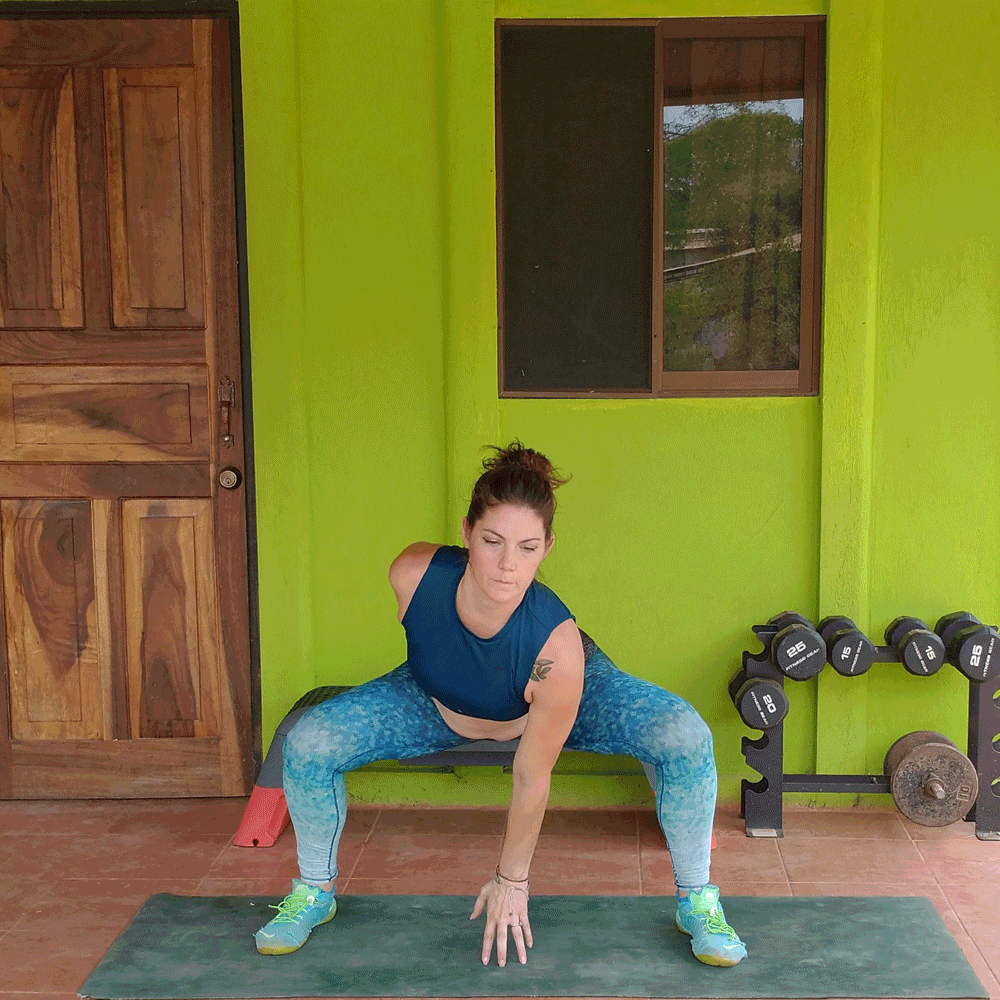
How to do it
Stand tall, your feet wider than shoulder-distance apart, your toes angled outward at 45-degree angles, your knees slightly bent, and your core engaged. Position your right arm so it’s pointing down in front of your right hip, your left arm pointing slightly backward, behind your left hip. From here, bend both knees, keeping your chest lifted.
Lower your glutes toward the floor as you squat, aiming to touch the ground between your feet with your right hand as your left arm reaches backward to assist with balance. Make sure your knees are aligning with your toes. When your hand touches the ground, powerfully jump up into the air, extending your knees and hips as you bring your feet together.
Land with your knees, ankles, and hips slightly bent, your feet together. Immediately jump back into the air, spreading your feet to wider than shoulder-distance apart, but this time switching hand position, so your left arm is in front of you and your right arm extending backward. Land with your knees slightly bent, and immediately lower yourself into another wide-legged squat, this time touching the ground with your left hand.
This counts for one repetition. Perform 8 to 10 total repetitions. Rest for a minute, then repeat one or two more times.
Curtsy lunge
The curtsy lunge is another excellent compound lower body exercise that targets the major muscle groups of the lower body while enhancing balance and coordination. It also requires greater engagement of the abductor muscles of the glutes and the adductor muscles of the inner thighs. You can perform this exercise with or without added resistance in the form of dumbbells or kettlebells.
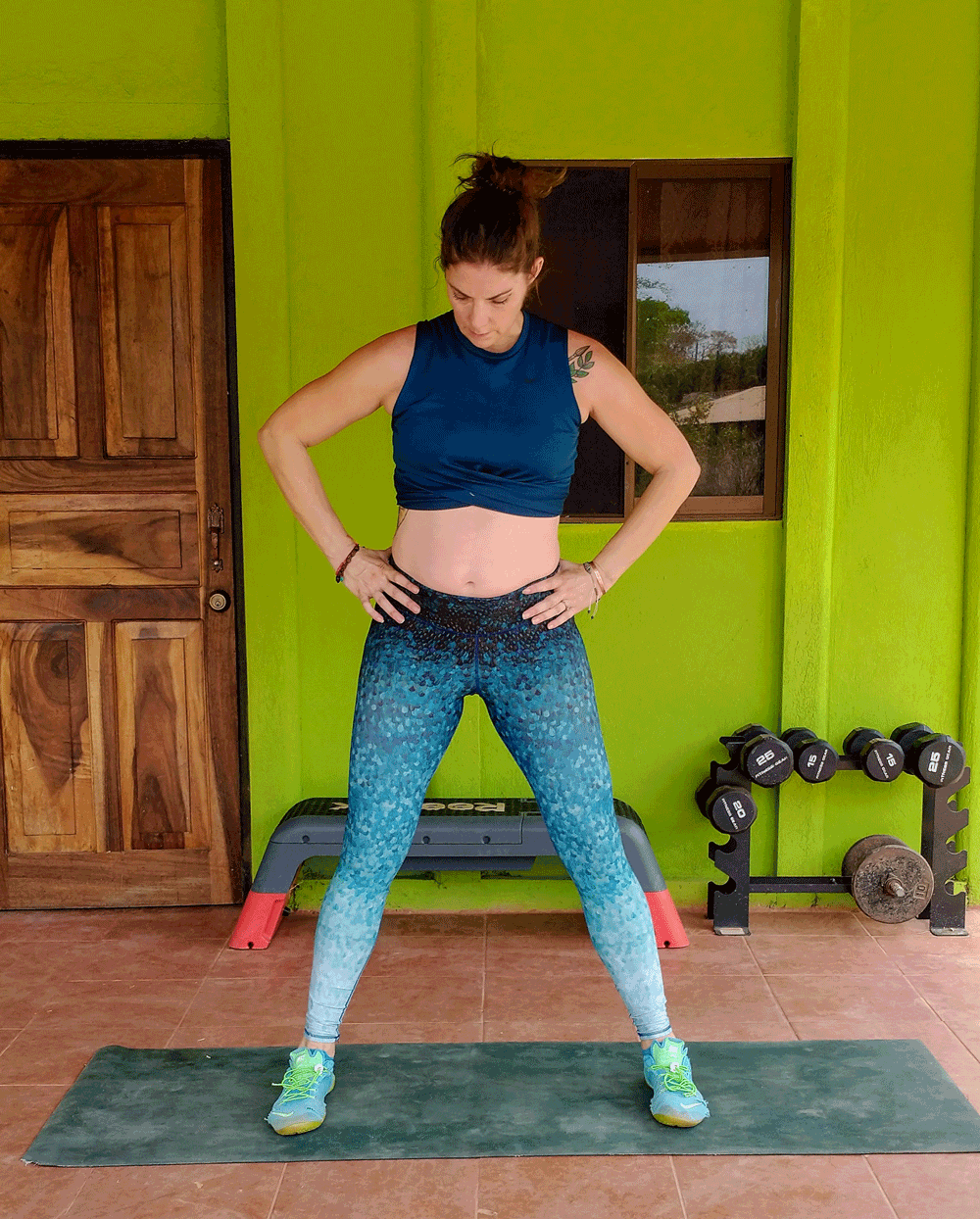
How to do it
Stand with your feet roughly shoulder-distance apart. When performing this exercise without dumbbells, place your hands on your hips. If you’re using dumbbells, hold them at your sides.
Engage your core, pull your shoulders back, and bend your knees slightly. Shift your weight to your left foot and step your right foot backward and across your body, placing the ball of your right foot on the ground behind and to the outside of your left foot. Keeping your torso lifted (not allowing it to bend forward or collapse toward the floor, bend both knees as though curtsying, lowering your right knee toward the floor.
Make sure your left knee is tracking in line with your left toes to protect your joints. When your right knee is almost to the ground, reverse the movement and press through your left heel to return to standing as you step your right foot back to the starting position.
Repeat to the opposite side. Continue alternating sides, completing a total of 10 to 12 repetitions per side. Complete two sets.
Weighted glute bridge
The glute bridge targets exactly what it says—the glutes. It also helps increase hamstring and core strength and stability. The exercise can be performed with or without added resistance in the form of a dumbbell.
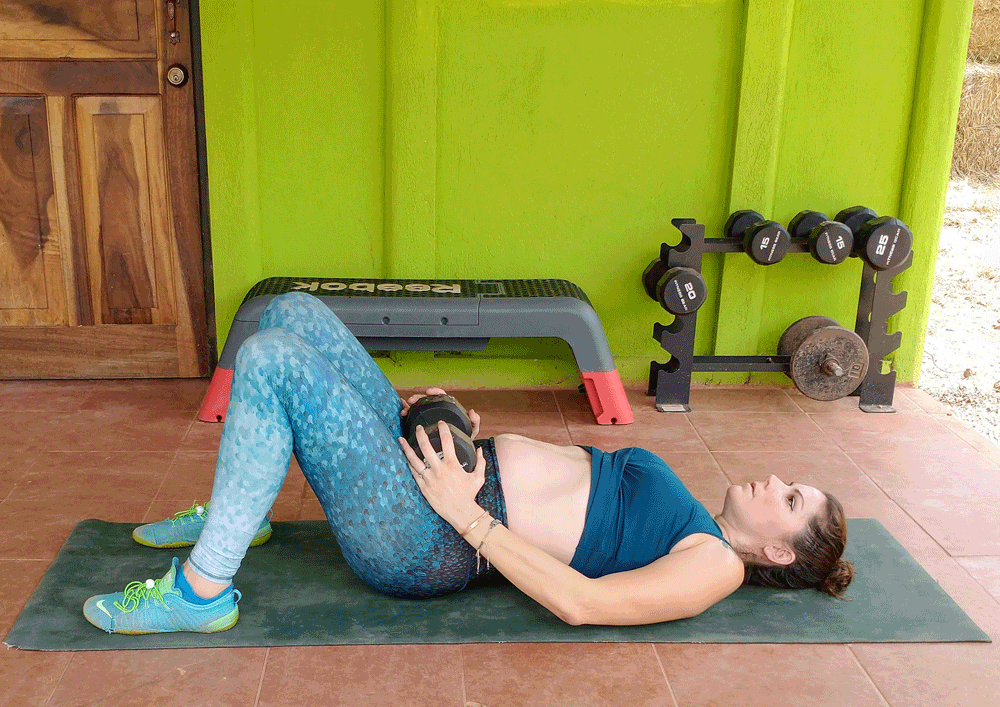
How to do it
Lie on your back, your knees bent, feet flat on the ground roughly hip-distance apart. If you choose to use a dumbbell, place it horizontally across your hips at the crease between your hips and thighs. Hold it in place with both hands.
Engage your core, pressing your low back into the ground. From here, squeeze your glutes and use them to lift your hips from the ground, pressing them toward the ceiling until they’re extended. Your body should form a straight line from your knees to your shoulder blades. Hold for a breath, then return your glutes back to the starting position.
Perform 15 to 20 repetitions and complete three total sets.
Calf raise
Calf raises target the major muscle groups of your lower legs. You can perform these using just your body weight, or if you’d like, add resistance by holding a dumbbell in each hand.
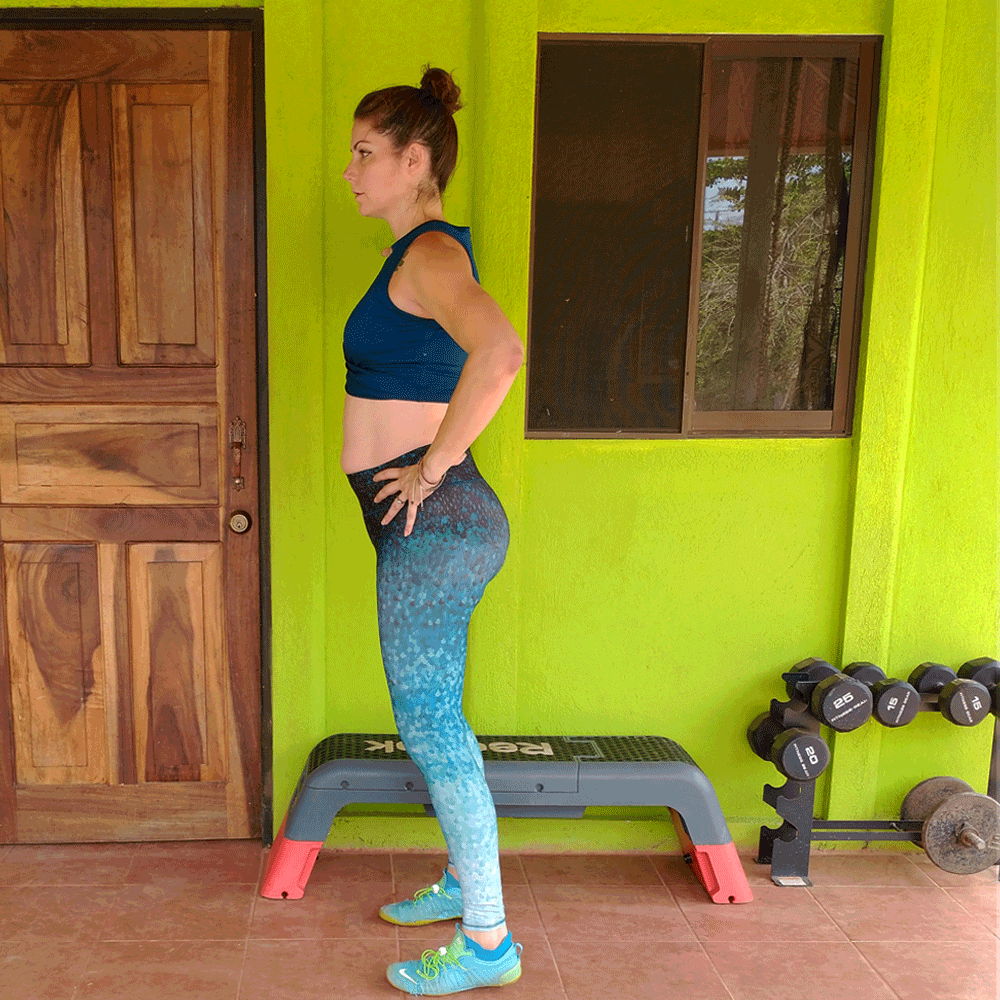
How to do it
Stand tall, your feet roughly hip-distance apart. If needed, place a hand lightly on a wall or a piece of furniture for support. With perfect posture, your core engaged, and your shoulders back, press through the balls of your feet and engage your calf muscles to rise up as high as you can.
Hold at the top of the exercise for a beat, then lower your heels back to the ground, stopping just before they touch down.
Perform 20 to 30 repetitions and complete two to three sets.
Next, try these exercises while watching TV.



















